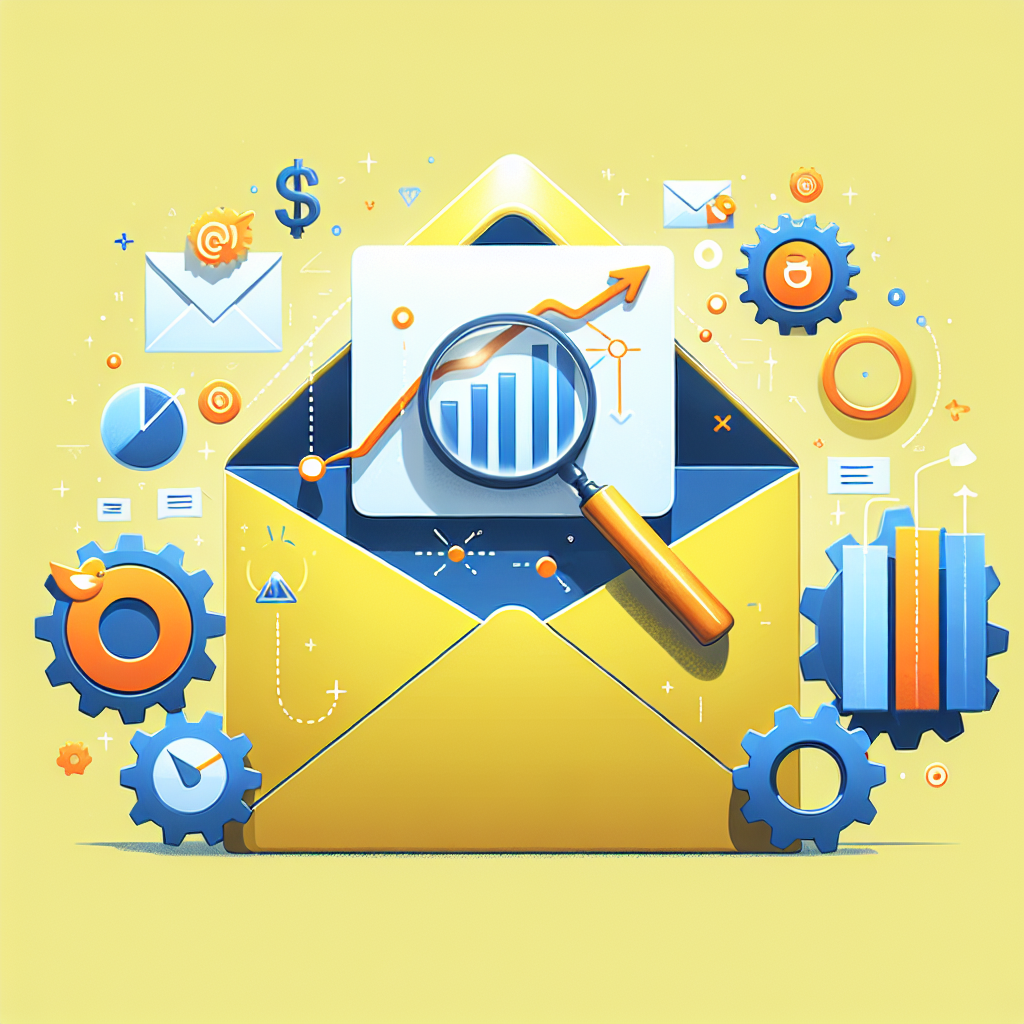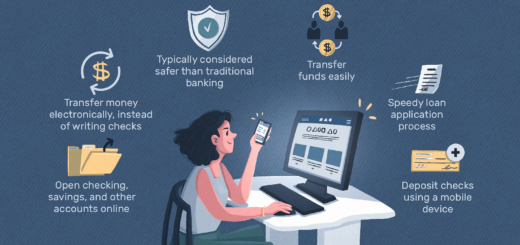The Power of Email Marketing
Imagine being able to reach your target audience directly, right in their inbox, with personalized and engaging content. That’s the power of email marketing. In a digital world filled with search engine optimization, social media marketing, and influencer collaborations, email marketing stands out as a reliable and effective method to connect with your customers. With tools for automation, campaign optimization, and newsletter best practices, email marketing allows you to build meaningful relationships with your audience, drive conversions, and ultimately boost your business’s success. So, whether you’re a small business owner or a marketing professional, harness the power of email marketing to make a lasting impact on your customers.

The Power of Email Marketing
Email marketing is a powerful tool that has the potential to greatly benefit your business. With its wide reach, ability to generate sales and revenue, and its cost-effectiveness, email marketing is a key component of any successful marketing strategy. In this article, we will explore the various ways in which email marketing can benefit your business and why it is such an effective marketing channel.
How Email Marketing Can Benefit Your Business
Increasing Brand Awareness
Email marketing is an effective way to increase brand awareness among your target audience. By consistently sending out emails that highlight your brand’s values, products, and services, you can ensure that your brand stays top-of-mind with your customers. Through strategic email campaigns, you can reach a wide audience and create brand recognition that will help you stand out from your competitors.
Building Customer Loyalty
Another major benefit of email marketing is its ability to build customer loyalty. By regularly communicating with your customers through personalized emails, you can foster a sense of trust and loyalty that will keep them coming back to your business. Through email newsletters, special promotions, and exclusive offers, you can create a strong bond with your customers that goes beyond a one-time purchase.
Driving Website Traffic
Email marketing is an excellent tool for driving traffic to your website. By including links to your website in your emails, you can direct your subscribers to specific landing pages, product pages, or blog posts. This not only increases website traffic, but it also improves the chances of conversions and sales. By strategically including compelling calls-to-action (CTAs) in your emails, you can encourage your subscribers to take action and visit your website.
Generating Sales and Revenue
One of the primary goals of email marketing is to generate sales and revenue for your business. By crafting targeted email campaigns that promote your products or services, you can directly influence purchasing decisions. Whether it’s through limited-time offers, exclusive discounts, or personalized recommendations, email marketing has the power to drive sales and boost your business’s bottom line.
Enhancing Customer Engagement
Engaging with your customers is crucial for building strong and long-lasting relationships. Email marketing allows you to interact with your customers on a personal level, providing them with valuable content, updates, and information that is relevant to their needs and interests. By creating engaging and interactive email campaigns, you can capture your subscribers’ attention and encourage them to actively engage with your brand.
Nurturing Leads and Conversions
Email marketing plays a vital role in lead nurturing and conversions. By capturing the contact information of potential customers through opt-in forms and lead magnets, you can build a targeted email list. Through carefully crafted email campaigns, you can nurture these leads by providing them with valuable content and gradually guiding them towards making a purchase. This process of lead nurturing increases the chances of converting leads into paying customers.
Achieving Cost-Effectiveness
Compared to other marketing channels, email marketing offers a high ROI and cost-effectiveness. With the ability to reach a large audience at a relatively low cost, email marketing allows you to maximize your marketing budget. Unlike traditional advertising methods that require significant investment, email marketing allows you to achieve measurable results without breaking the bank.
Why Email Marketing is Effective
High Reach and Penetration
Email marketing has an incredibly high reach and penetration rate. Almost everyone has an email address, and the majority of people check their emails daily. This means that by utilizing email marketing, you have the ability to reach a vast audience, ensuring that your message reaches its intended recipients.
Direct and Personal Communication
Email marketing provides a direct and personalized communication channel with your audience. Unlike other marketing channels, emails allow you to craft personalized messages that cater to the specific needs and interests of your subscribers. By addressing your subscribers by their first names and tailoring your content to their preferences, you can create a sense of intimacy and connection.
Ability to Reach Mobile Users
With the ever-increasing use of smartphones and mobile devices, email marketing has adapted to reach mobile users effectively. Emails are optimized for mobile devices, ensuring that the content is easily readable and visually appealing on smaller screens. This allows you to reach your audience regardless of their preferred device, making email marketing suitable for a mobile-first world.
Trackability and Measurable Results
One of the key advantages of email marketing is its trackability and the ability to measure results. Through email marketing tools and platforms, you can track various metrics such as open rates, click-through rates, conversions, and more. This data allows you to analyze the effectiveness of your email campaigns and make data-driven decisions for future optimizations.
Ease of Use and Automation
Email marketing is relatively easy to use and can be automated to streamline your marketing efforts. With the help of email marketing platforms and automation tools, you can schedule and send emails at the optimal times, segment your audience, and personalize your content. This automation saves time and resources, allowing you to focus on other areas of your business.
Low Cost and High ROI
Compared to other marketing channels, email marketing offers a low-cost solution with a high return on investment (ROI). With minimal expenses required for email marketing tools and platforms, you can reach a large audience and achieve measurable results without spending a significant amount of money. The high ROI makes email marketing a cost-effective marketing strategy for businesses of all sizes.
Email Marketing vs Other Marketing Channels
Comparison with Social Media Marketing
While social media marketing allows you to reach a wide audience and engage with your customers, it often faces limitations in terms of reach and control. With algorithm changes and the possibility of posts being buried in users’ social media feeds, the reach of social media marketing can be unpredictable. On the other hand, email marketing allows for direct and personalized communication with your audience without relying on algorithms. Email marketing also offers greater control over the design, layout, and content of your messages.
Comparison with Search Engine Marketing
Search engine marketing (SEM) primarily focuses on paid search advertising and search engine optimization (SEO). While SEM can generate immediate results through paid ads, it can be costly and may not be sustainable for all businesses in the long run. Email marketing, on the other hand, allows you to build a targeted email list and nurture leads over time. It offers a cost-effective approach and the ability to engage with your customers directly.
Comparison with Content Marketing
Content marketing involves creating valuable and relevant content to attract and retain a clearly defined audience. While content marketing plays a crucial role in establishing thought leadership and building brand authority, it often relies on driving traffic to your website through various channels. Email marketing complements content marketing by directly delivering your content to your subscribers’ inboxes. With personalized email campaigns, you can ensure that your content is seen by your target audience.
Comparison with Traditional Advertising
Traditional advertising methods, such as print ads and TV commercials, often lack the ability to directly engage with your target audience. They also tend to have a high cost, making them less accessible for smaller businesses. Email marketing, on the other hand, allows for personalized and targeted communication with your audience at a fraction of the cost. It offers the opportunity to create a strong connection with your customers and drive measurable results.
Integration with Other Marketing Strategies
Email marketing can be seamlessly integrated with other marketing strategies to create a holistic marketing approach. Whether it’s incorporating social media links in your emails to drive engagement or using email marketing to promote your content marketing initiatives, email marketing plays a pivotal role in ensuring that your different marketing channels work together in harmony.

The Role of Email Marketing in Customer Relationship Management (CRM)
Strengthening Customer Engagement
Email marketing is a key component of customer relationship management (CRM). By regularly communicating with your customers and delivering valuable content, you can strengthen customer engagement and create a sense of loyalty. Email campaigns can be used to keep your customers informed about new products, updates, events, and promotions, ensuring that they remain engaged with your brand.
Building Long-Term Relationships
Email marketing allows you to build long-term relationships with your customers. By consistently delivering valuable and relevant content and providing personalized offers, you can nurture a strong connection with your audience. This builds trust and loyalty, encouraging customers to choose your brand over competitors.
Customer Retention and Repeat Business
Email marketing is an effective tool for customer retention and encouraging repeat business. By staying in touch with your existing customers through targeted email campaigns, you can remind them of your brand and keep them engaged. Through personalized offers and exclusive discounts, you can incentivize repeat purchases and maintain customer loyalty.
Upselling and Cross-Selling
Email marketing provides the opportunity to upsell and cross-sell to your existing customers. By analyzing their purchase history and behavior, you can send tailored offers and recommendations that are relevant to their interests. This not only increases customer satisfaction but also boosts your sales and revenue.
Reactivating Inactive Customers
Email marketing can be used to reactivate inactive customers and encourage them to re-engage with your brand. By sending targeted emails that entice them with exclusive offers or personalized incentives, you can remind them of the value your brand provides. This allows you to win back customers who may have become disengaged or forgotten about your brand.
The Impact of Personalization in Email Marketing
Benefits of Personalization
Personalization is a key component of successful email marketing campaigns. By tailoring your emails to the specific needs and interests of your subscribers, you can create a more engaging and relevant experience. Personalization allows you to build stronger relationships with your customers, increase open and click-through rates, and drive conversions.
Segmentation and Customization
Segmentation is a crucial aspect of personalization in email marketing. By segmenting your email list based on various factors such as demographics, behavior, purchase history, and interests, you can deliver targeted and customized content to different groups of subscribers. This ensures that your emails are highly relevant and valuable to each recipient, increasing the chances of engagement and conversions.
Dynamic Content and Behavioral Triggers
Dynamic content and behavioral triggers are powerful tools for personalization in email marketing. By dynamically changing the content of your emails based on the recipient’s behavior or preferences, you can create a more personalized experience. For example, sending abandoned cart reminder emails with the specific items left behind or offering tailored product recommendations based on previous purchases.
Personalized Subject Lines and Email Body
Personalization can also be implemented in the subject lines and body of your emails. By including the recipient’s name or referencing their previous interactions with your brand, you can capture their attention and make the email feel more personalized. This increases the chances of the email being opened and read, leading to higher engagement and conversions.
Case Studies and Examples
To further emphasize the impact of personalization in email marketing, let’s consider a hypothetical case study. Company XYZ implemented a personalized email marketing campaign aimed at increasing customer engagement. By segmenting their email list based on past purchases and customer preferences, they were able to deliver targeted emails with personalized product recommendations. The results were remarkable – open rates increased by 30%, click-through rates improved by 20%, and there was a significant increase in overall sales.
Email Marketing and Lead Generation
Creating Lead Magnets and Opt-In Incentives
Lead magnets are valuable resources or incentives that you offer to your website visitors in exchange for their email addresses. These can be in the form of e-books, whitepapers, exclusive content, or discounts. By creating compelling lead magnets, you can effectively capture the contact information of potential customers and build your email list.
Designing Effective Landing Pages
A well-designed landing page is crucial for successful lead generation through email marketing. Your landing page should clearly communicate the value of your lead magnet and convince visitors to provide their email addresses. Through persuasive copy, eye-catching visuals, and an intuitive sign-up process, you can maximize conversions and grow your email list.
Lead Capture Forms and Opt-In Strategy
Lead capture forms are essential for collecting email addresses and other relevant information from your website visitors. By strategically placing opt-in forms throughout your website and optimizing the opt-in process, you can encourage users to subscribe to your email list. This strategy helps you generate leads and expand your subscriber base.
Lead Nurturing with Email Campaigns
Once you have captured leads through your opt-in forms, it’s important to nurture these leads through targeted email campaigns. By delivering valuable content, addressing their pain points, and gradually building trust, you can move leads through the sales funnel and increase the likelihood of conversions. Lead nurturing emails should be personalized, relevant, and timed appropriately to maximize engagement.
Lead Scoring and Qualification
Lead scoring is a method of evaluating the quality and readiness of your leads for sales. By assigning scores based on factors such as engagement, interaction, and demographics, you can prioritize leads and focus your efforts on those who are most likely to convert. Lead scoring allows for more efficient and effective lead management, ensuring that your sales team’s efforts are maximized.
Converting Leads into Customers
The ultimate goal of email marketing and lead generation is to convert leads into paying customers. By carefully crafting email campaigns that target the specific needs and pain points of your leads, you can encourage them to take the next step in their customer journey. Whether it’s through personalized product recommendations, limited-time offers, or exclusive discounts, email marketing plays a crucial role in converting leads into loyal customers.
Segmentation and Targeting in Email Marketing
Benefits of Segmentation
Segmentation is a powerful strategy in email marketing that allows you to divide your audience into distinct groups based on various factors. By segmenting your email list, you can deliver highly targeted and personalized content that resonates with each group. This not only increases the effectiveness of your email campaigns but also improves customer engagement and satisfaction.
Demographic Segmentation
Demographic segmentation involves dividing your email list based on demographic factors such as age, gender, location, and income. This segmentation allows you to tailor your emails to the specific characteristics and preferences of each group. For example, a clothing retailer can send personalized emails featuring winter coats to customers living in colder regions, while promoting swimwear to customers in warmer climates.
Behavioral Segmentation
Behavioral segmentation involves segmenting your email list based on the actions and behaviors of your subscribers. This can include factors such as purchase history, browsing behavior, email engagement, and interactions with your website or app. By understanding the behaviors of your subscribers, you can send targeted emails that address their specific needs and interests.
Psychographic Segmentation
Psychographic segmentation focuses on the values, attitudes, and lifestyles of your subscribers. By understanding their personality traits, interests, and motivations, you can create personalized emails that resonate with their unique preferences. For example, a health and wellness brand can segment their email list to target fitness enthusiasts, promoting relevant products and content that align with their lifestyles.
Geographic Segmentation
Geographic segmentation involves dividing your email list based on the geographical location of your subscribers. This segmentation allows you to deliver localized and location-specific content, promotions, and events. By tailoring your emails to the specific needs and interests of each location, you can increase customer engagement and create a more personalized experience.
Targeted Email Marketing Campaigns
Once you have segmented your email list, you can create targeted email marketing campaigns that cater to the specific needs and preferences of each group. By sending highly relevant and personalized content, offers, and recommendations, you can increase open and click-through rates, drive conversions, and create a more engaging experience for your subscribers.
The Importance of Building an Email List
Building an Opt-In Email List
Building an opt-in email list is crucial for the success of your email marketing efforts. An opt-in email list consists of subscribers who have voluntarily provided their email addresses and have given explicit permission to receive emails from your business. This permission-based marketing ensures that you are sending emails to an engaged and interested audience, increasing the chances of conversions and customer satisfaction.
Growing Your Subscriber Base
To grow your subscriber base, it’s important to implement various strategies to capture email addresses. This can include adding opt-in forms on your website, utilizing lead magnets and incentives, promoting your email list through social media channels, and leveraging partnerships or collaborations with other businesses. By continuously implementing strategies to grow your subscriber base, you can expand your reach and increase your email marketing effectiveness.
Incentives for Subscriptions
To incentivize subscriptions and encourage users to join your email list, it’s important to offer valuable incentives. This can include exclusive discounts, access to premium content, early access to new products or services, or entry into giveaways or contests. By providing tangible benefits to subscribers, you can increase the perceived value of subscribing to your email list and capture more email addresses.
Opt-In Forms and Sign-Up Process
Opt-in forms are essential for capturing email addresses and other relevant information from your website visitors. The design and placement of these opt-in forms play a crucial role in their effectiveness. Opt-in forms should be strategically placed in visible areas of your website, feature compelling copy, and have a straightforward sign-up process. By optimizing your opt-in forms, you can maximize conversions and capture more email addresses.
Email List Hygiene and Management
Maintaining a clean and healthy email list is essential for effective email marketing. This involves regularly cleaning your email list by removing inactive subscribers, correcting invalid or bounce email addresses, and managing email deliverability. By ensuring that your email list is up to date and free from invalid or inactive addresses, you can improve your email engagement rates and maintain a positive sender reputation.
Permission-Based Marketing
Permission-based marketing is a fundamental principle of email marketing. By obtaining explicit permission from your subscribers to send them emails, you are ensuring that your emails are welcomed and avoid being labeled as spam. Permission-based marketing builds trust and credibility with your audience, resulting in higher engagement rates and a more positive email marketing experience for both you and your subscribers.
Email Marketing Metrics and KPIs
Open Rates
Open rates measure the percentage of recipients who open your emails. It is an important metric that indicates the effectiveness of your subject lines and the level of interest generated by your emails. By tracking open rates, you can analyze the success of your email campaigns and make adjustments to improve engagement.
Click-Through Rates (CTR)
Click-through rates measure the percentage of recipients who clicked on a link within your emails. It indicates the level of engagement and interest generated by your email content and calls-to-action. By tracking click-through rates, you can determine which links and content are most effective in driving engagement and conversions.
Conversion Rates
Conversion rates measure the percentage of recipients who take a desired action as a result of your email campaign. This action could include making a purchase, filling out a form, downloading a resource, or clicking on a specific link. By tracking conversion rates, you can analyze the effectiveness of your email campaigns in driving desired outcomes and optimize your email content and design accordingly.
Bounce Rates
Bounce rates measure the percentage of emails that are not successfully delivered to recipients’ inboxes. Bounces can be classified as either hard bounces or soft bounces. Hard bounces occur when emails are sent to invalid or non-existent email addresses, while soft bounces occur when emails are temporarily unable to be delivered. By monitoring bounce rates, you can identify and rectify potential issues with your email delivery and maintain a healthy email list.
Unsubscribe Rates
Unsubscribe rates measure the percentage of recipients who choose to unsubscribe from your email list. While it is natural to receive unsubscribe requests, consistently high unsubscribe rates may indicate issues with your email content, frequency, or relevance. By monitoring unsubscribe rates, you can identify areas for improvement and make adjustments to your email marketing strategy.
ROI and Revenue Generated
The return on investment (ROI) and revenue generated from email marketing are crucial metrics for measuring the success of your email campaigns. By tracking the revenue generated from your email campaigns and comparing it against the costs associated with email marketing, you can determine the effectiveness and profitability of your efforts. ROI and revenue metrics provide valuable insights into the financial impact of email marketing on your business.
The Future of Email Marketing
Predictive Analytics and AI
The future of email marketing lies in the integration of predictive analytics and artificial intelligence (AI). These technologies enable businesses to leverage data and automated algorithms to deliver highly personalized and timely emails. By analyzing past customer behavior and preferences, predictive analytics and AI can anticipate the most relevant content, offers, and recommendations for each individual subscriber.
Hyper-Personalization and Real-Time Messaging
Hyper-personalization takes personalization to the next level by delivering individualized content in real-time. Through advancements in data analytics and technology, businesses can send emails that dynamically update based on a subscriber’s current context, location, or behavior. This level of personalization creates a highly tailored experience and increases the chances of engagement and conversions.
Integration with Other Communication Channels
The future of email marketing involves seamless integration with other communication channels. For example, incorporating social media buttons and sharing options within emails allows for increased engagement and the potential for viral sharing. Integration with messaging apps and chatbots also enables businesses to communicate with subscribers in real-time and offer immediate support or assistance.
Mobile-First Approach
As mobile devices continue to dominate internet usage, a mobile-first approach is essential for successful email marketing. Responsive email design and optimized content for mobile devices ensure that your emails are easily accessible and visually appealing on smartphones and tablets. Mobile-specific features, such as click-to-call buttons or mobile-friendly landing pages, further enhance the mobile user experience.
Interactive Emails and Gamification
Interactive emails and gamification are emerging trends in email marketing that increase engagement and captivate subscribers’ attention. By incorporating interactive elements such as quizzes, surveys, or videos, businesses can create a more immersive and interactive email experience. Gamification elements, such as contests, rewards, or progress bars, provide incentives for subscribers to actively engage with your emails.
Ethics and Privacy in Email Marketing
As the importance of privacy and data protection continues to grow, businesses must prioritize ethical practices in email marketing. Respecting subscribers’ privacy, obtaining explicit consent, and complying with data protection regulations are essential for maintaining trust and credibility. Transparent privacy policies, clear opt-in processes, and robust security measures are crucial for building long-term relationships with subscribers.
In conclusion, email marketing is a powerful marketing channel that can drive brand awareness, customer engagement, and sales growth. Its effectiveness lies in its high reach, personalization capabilities, trackability, and cost-effectiveness. By understanding the benefits of email marketing, its role in customer relationship management, and the impact of personalization, businesses can leverage email marketing to nurture leads, target specific segments, and build long-term relationships. With the future of email marketing embracing advanced technologies and a customer-centric approach, the possibilities for businesses to connect with their audience and achieve marketing success are endless.

















It's great that you talked about how business insurance can provide financial protection against unexpected events and help ensure the…
I like that you mentioned how business insurance is essential for protecting your bottom line and the long-term viability of…